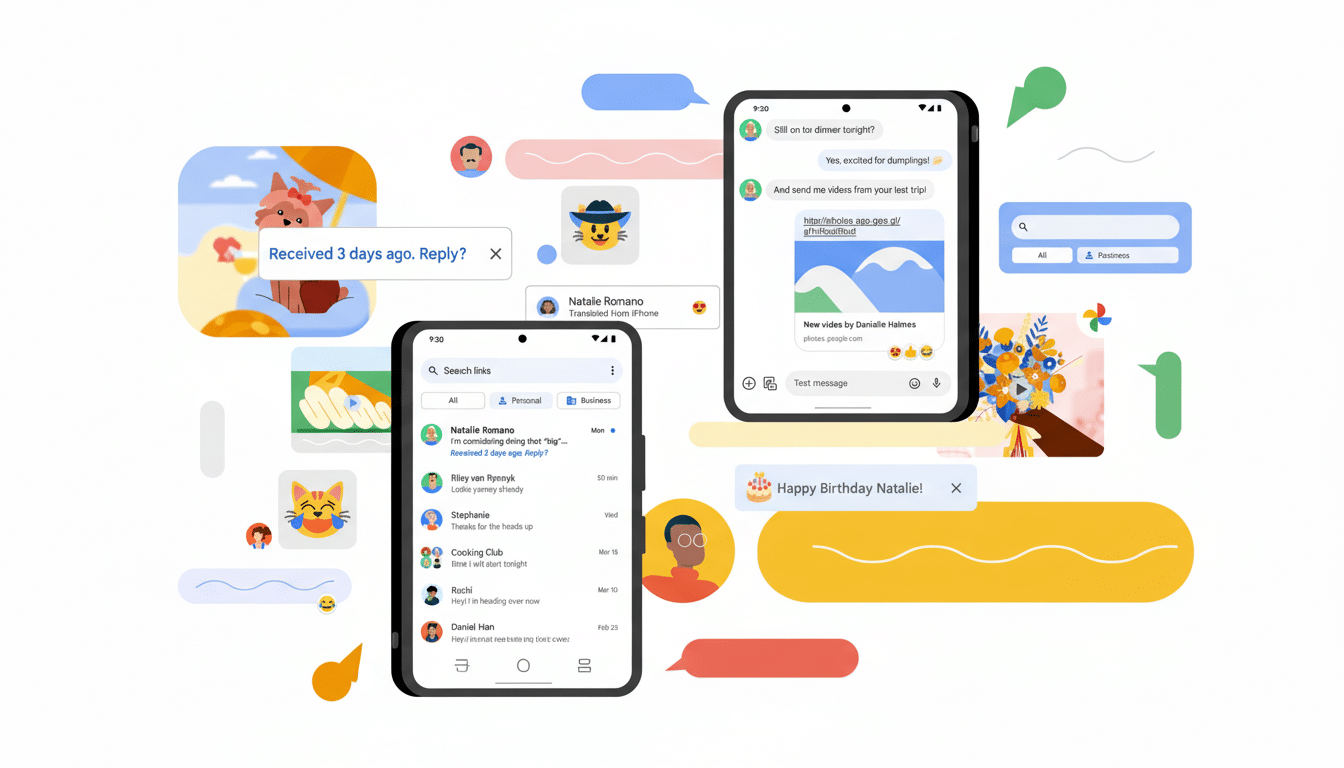Google is quietly testing three updates for Messages that simplify the process of saving media, sharing location, and getting to Gemini.
The changes are minor but focus on regular friction points and appear to be part of a wider push to make the default Android texting app more user-friendly in an era when Rich Communication Services (RCS) is considered the norm.

What Changes When You Save Media From Google Messages
One of the most basic — and useful — adjustments you can make is what occurs after you save a photo or video from a chat. Rather than only sending a small confirmation to the bottom of the screen, Messages is readying an option to open the saved file right there. That means one tap and you’re dumped right into your editor of choice, whether that’s Google Photos for simple updates, Files for organization, or a third-party app to go deep on the editing process.
It’s a little quality-of-life investment with an outsize return. Consider the process of saving a concert clip and immediately opening that clip in an editor to trim it, stabilize it, or apply filters — no folder diving, no hunting for the file again in some other app. Technically, this probably relies on Android’s intent system to make sure the media goes to whichever app you have as default for saving and sharing in the shortest time possible from capture > save > share.
Yet small enhancements like these start to add up, especially in group texts where media is shared actively. For power users who share content between apps, it’s the type of spit and shine that makes Messages feel faster without being more complicated.
Clearer Location Sharing With The Tease Of Live Updates
And location sharing is in the spotlight, too. The compose sheet now includes a simple-to-press button for sharing your current location. With future builds, Google is experimenting with new labelling that more clearly communicates whether you’re sending one-off location or something marching to a rhythm.
“With internal flags such as enable_live_location_sharing_extension, Google could be working on live location — real-time updates over a span of time — familiar to other apps like WhatsApp and Telegram,” he wrote. The text in the interface is a work in progress, of course, and it could just be that Google wants to avoid confusion initially on what this one-tap is when sharing to begin with as they roll these new capabilities out; to ease you into them.
The stakes are high here. Location data is sensitive information, and users want clear visibility into exactly what they are sharing and for how long. Clear labels and transparent controls are the ante. If live updates come through, you can count on minute-by-minute timers, clear stop triggers, and visuals confirming that in the chat. RCS can also support rich attachments and metadata, and the GSMA Universal Profile is what provides a framework for those features to pretty much always work consistently across carriers and devices.

Gemini Presence Grows In The Compose Screen
Google’s AI assistant could also be on track to become harder to escape in Messages. A Floating Action Button (FAB) for Gemini — which you already have on quick access — and a new larger size to match the main chat button is being tested. It’s a gentle UI nudge, and it speaks to Google’s intent: More humans ought to try AI-powered drafting and tone suggestions that offer rapid-fire idea generation in their texting.
This deeper appearance of Gemini coincides with the company’s goal to weave AI throughout everyday workflows. Inside Messages, that might involve condensing a lengthy thread, offering short template responses based on the conversation at hand, or assisting with suggestions for sensitive messages. A bigger front door improves discoverability without turning the interface upside down.
Why These Tweaks Are Important For RCS And Messaging UX
These updates are arriving as RCS enters the realm of mainstream scale. In total, Google says that Messages now has over 1 billion monthly users on RCS globally, and momentum is increasingly picking up as more and more ecosystems get behind the standard. The higher the stakes, the more polished an app is expected to be — saving and editing media ought to be effortless, location sharing needs to make perfect sense, and AI must seem helpful rather than just plain nosy.
For users, the payoff is immediate: less tapping around to manage media, better guardrails on location tracking, and easier access to smart help. For Google, it’s all about transforming those daily habits into sticky victories — transforming Messages not only into the default SMS app but also a modern RCS hub that has little trouble competing with cross-platform messengers.
As with all experiments we spot in beta, nothing here is guaranteed to be shipped as described.
But the trend is directionally clear: trim friction, clarify sensitive actions, and surface AI where it adds value. If Google threads that needle, Messages could end up feeling faster, safer, and a bit smarter — all without forcing users to relearn how they get things done.

